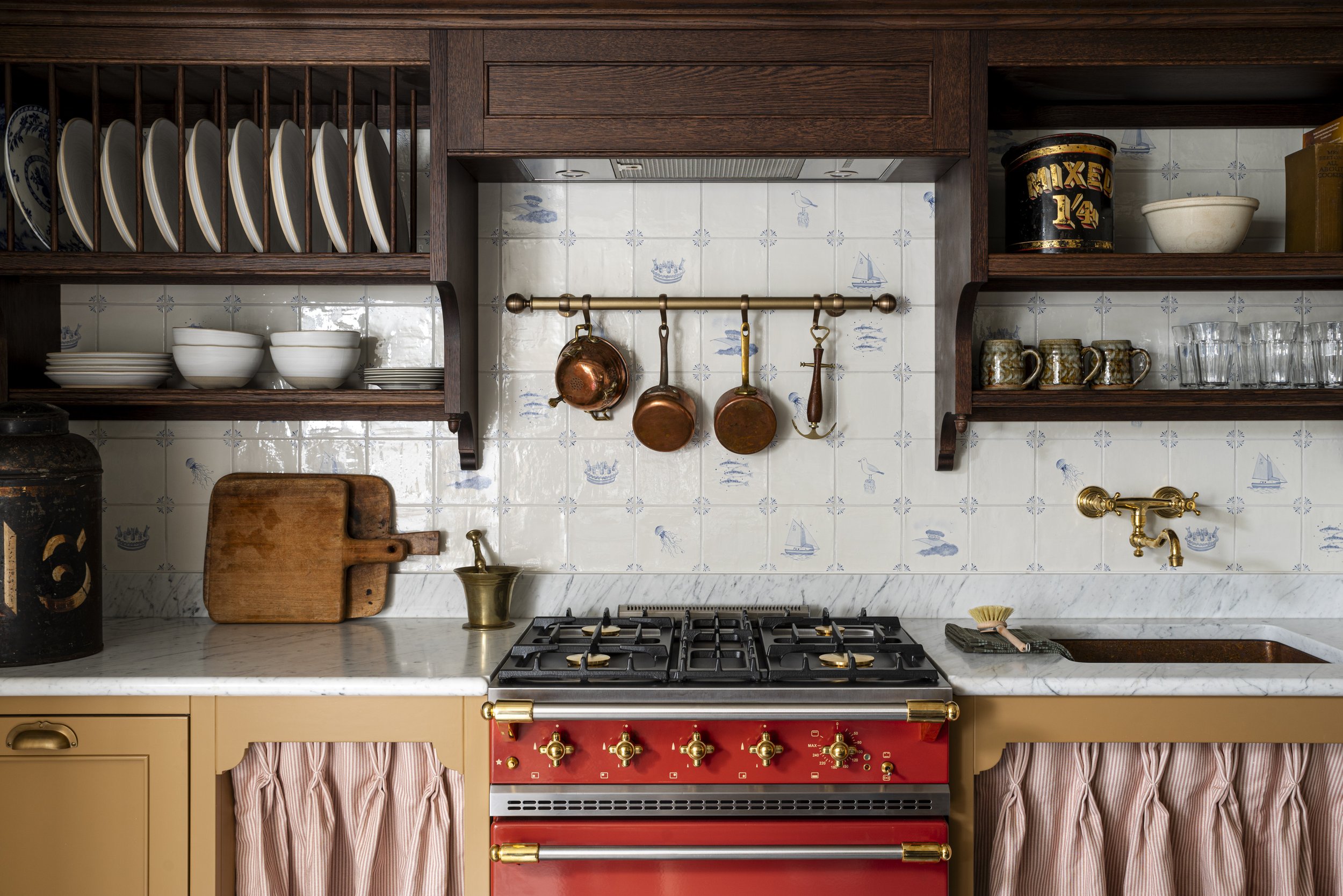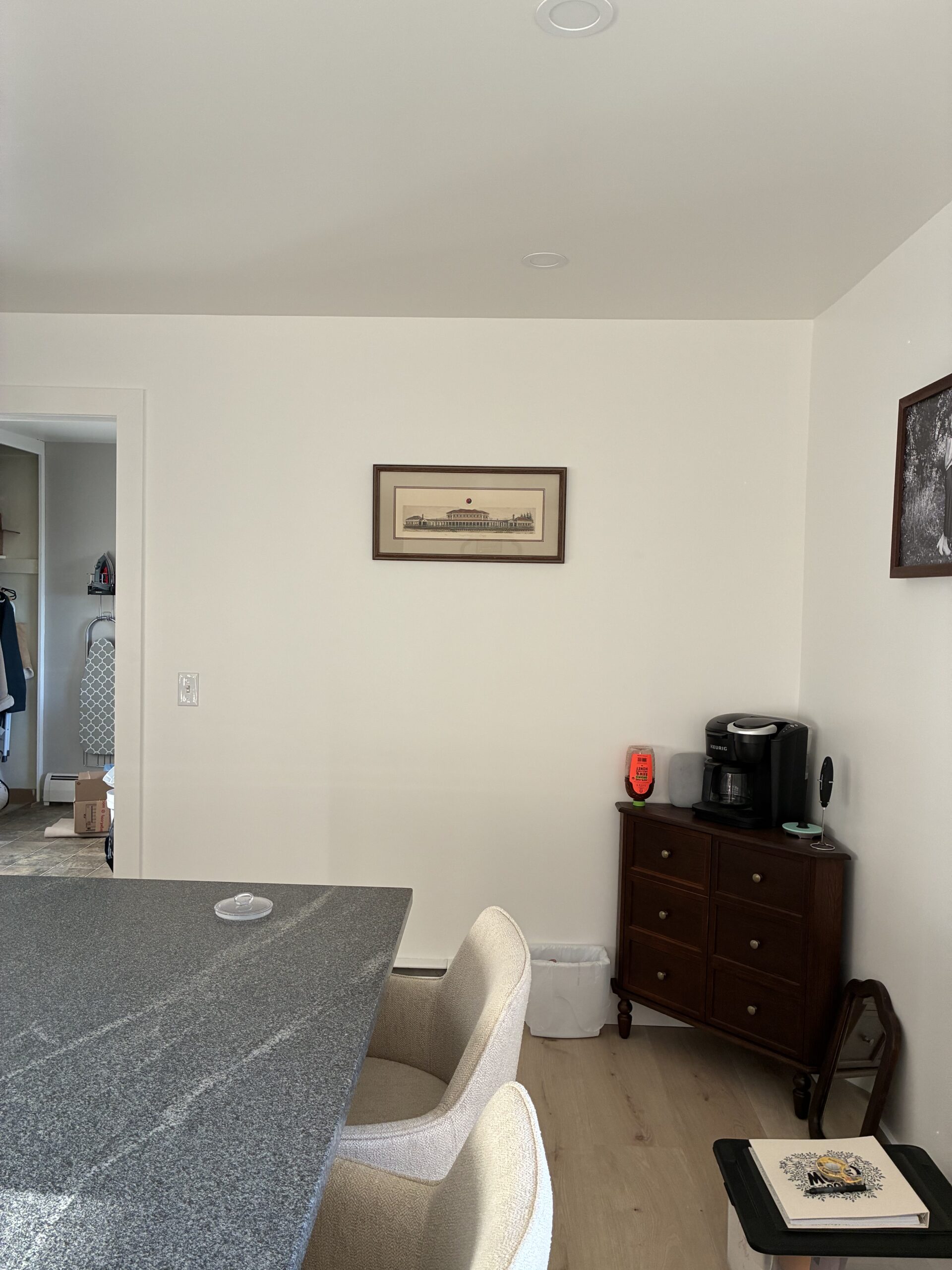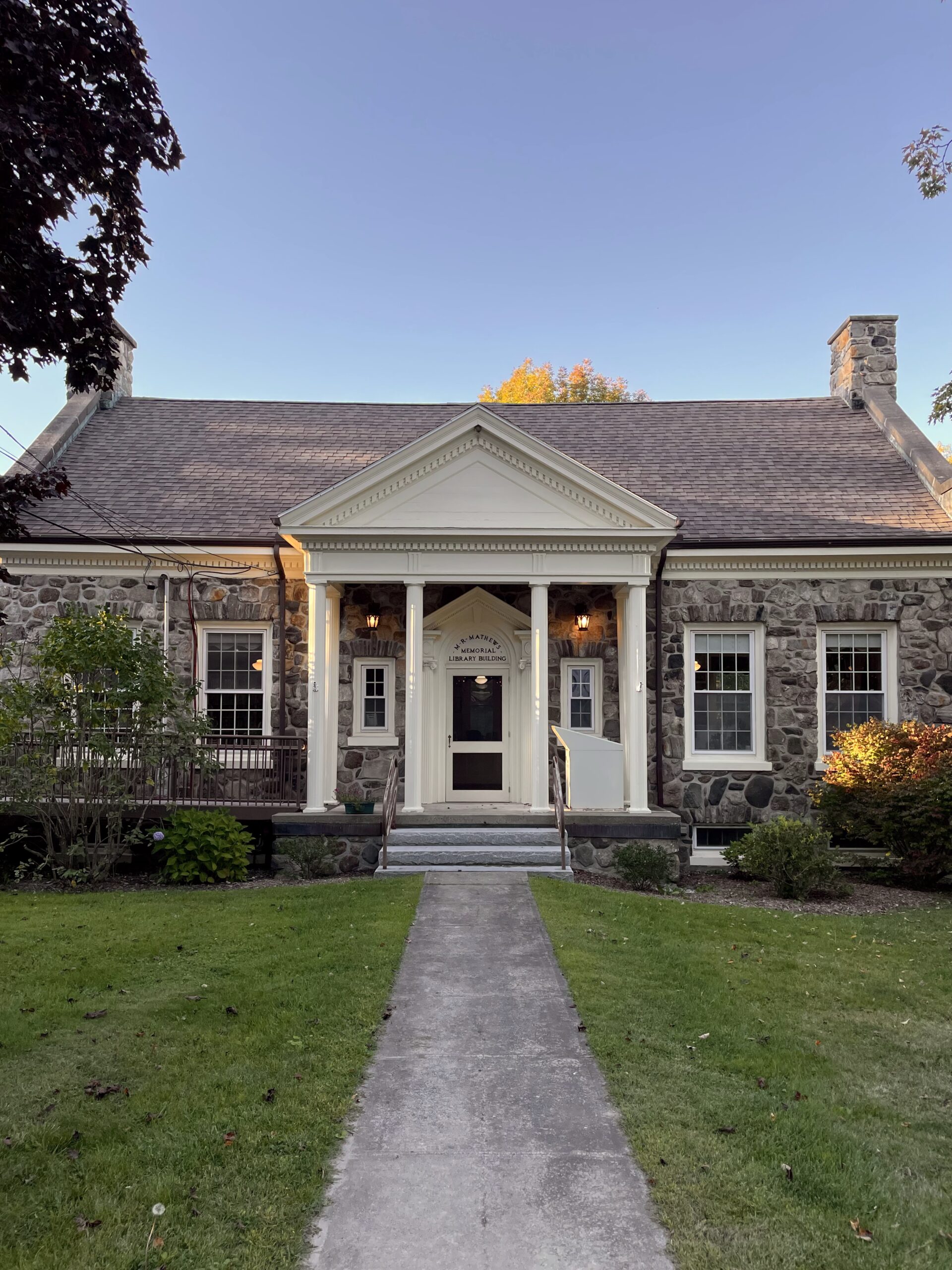As design trends have shifted from modern to English Country, Shaker, and Classical, we’re seeing a revival of many exemplary design features. One of which is Delft tiles. The desire for pattern, imperfection, and a sense of history is perhaps why these tiles are especially popular once again. And while Delft tiles remind us of a very particular Dutch interior style, designers are finding ways to incorporate this charming feature into both new build and historic homes today.
This post contains affiliate links.

Plum Cottage is part of Atlanta Trevone (@atlanta.trevonebay) and is available to rent for guest stays.
Tiles are from Decorum
The History Of Delft Tiles
Delft tiles originated in Delft, a small city in the Netherlands. They are traditionally blue and white tin-glazed tiles featuring paintings of Dutch life and mythological creatures. Farmers in fields, ships, windmills, farm animals, and mermaids are just a sampling of what’s depicted on Delft tiles.
Virginia Clark, a writer for House & Garden shares a more in-depth history on Delft Tiles:
“In the seventeenth century, at the height of the Dutch Golden Age, [the town of Delft] was brimming with importance. Around the city the Netherlands at large was reaching the height of its powers, dominating European trade, setting up an outpost in Japan, [and] founding universities.
The invention of Delft pottery in the mid-1600s was a response to the popularity of Chinese blue and white porcelain, the technique for which would not be mastered in Europe until the beginning of the eighteenth century. Potters around the Netherlands had already begun developing the art of tin-glazed earthenware to mimic the glossy white surface of porcelain, but in the 1640s and 50s it was Delft potters who started to use personal monograms and factory marks, and the tiles became works of art in their own right. The trend for Delftware had already spread to Britain, where the new technique of transfer printing allowed for Delft-style tiles to be mass produced, some with uniform designs.
The pictorial representations on Delft tiles imitated the patterns and images on Chinese porcelain, which had been imported in great quantities via the activities of the Dutch East India Company. However they soon started to incorporate scenes from Dutch life – farm workers, windmills, tulips and sailing ships taken from the local landscape – alongside images of everything from biblical stories to mythological creatures.”

“As wealth spread among the merchants of the Netherlands, the glazed Delft tiles were increasingly popular for fireplaces and damp, smoky rooms like kitchens, where they could be easily cleaned. Their appeal was widespread, from moderately wealthy middle-class houses who might have bought very simply decorated tiles or even factory seconds, to aristocratic families commissioning vast tiled rooms.
At the end of the eighteenth century, the production of ‘Delft Blauw’ in Delft itself almost ground to a halt, as similar tiles could be manufactured more cheaply in Britain. Only a few factories in the town have continuously produced in the tradition since the sixteenth century. In Britain, Delftware went out of style over the course of the nineteenth century as the industrial potteries in Staffordshire developed new techniques for making blue and white ceramics that were lighter and more durable than tin glazing.”

Why Are Delft Tiles Popular Again?
Interior design trends typically come full circle every decade or so. What was popular 10 years ago is likely making a return, often with slight alterations to better suit current tastes. Trends also tend to swing from one extreme to the other. After years of seeing modern minimalism and earthy tones dominate, it’s only natural that we begin to crave the opposite.
We are currently in a time where English cottage, country, and Shaker interiors are trending. Individualism, imperfection, character, history, and color are once again celebrated. It’s no surprise then that Delft tiles, which are known for individualism, imperfection, character, history, and color, are finding their place in homes today.


Emmi Micallef, co-founder of Historic Decorative Materials, shares a thoughtful reason why Delft tiles are popular again.
“From a visual perspective, Delft Tiles carry depth in terms of viewing them up close and further back. This near and far music – as it’s called in the art world, holds incredible artistic power. Gazing upon Delft Tiles up close, one is drawn into the details of the imagery. Stories unfold…As one is busy at task cooking in one’s kitchen, glancing at a Delft Tile back splash could mean the difference between chopping garlic stressing about life in 2020, or imagining idyllic scenes of those who have lived more simply in the past.
The far music of Delft Tile – which simply means what one sees when one stands back and views these tiles from a distance, are extraordinary. The glaze used is typically a gloss glaze, so…these Delft Tiles will glimmer with light from sun beaming in from a kitchen window or a light overhead.”

“Patterns in Delft Tile go one step beyond shapes and geometry by retelling life in 1700’s Amsterdam, where trade was at it’s height and cultures were discovering one another. Therefore, a Delft tile kitchen backsplash does not only have geometric appeal, but a human interest story of life lived centuries ago.”
– Historic Decorative Materials

Plum Cottage is part of Atlanta Trevone (@atlanta.trevonebay) and is available to rent for guest stays.
Tiles are from Decorum
Shop Delft Tiles
The most popular applications of Delft tiles are in the kitchen, the bathroom, and on a fireplace surround. The creativity of the placement, the spacing of scenes, and the use of blank or corner motif tiles all create opportunities to design a look that’s entirely unique to your home. Below are a few places to shop for both traditional style Delft tiles and modern day adaptations.
SCROLL RIGHT TO VIEW ALL TILES →
DO YOU WANT
The Inside Scoop
Where behind the scenes, exclusive advice, and candid conversations are sent straight to your inbox every week.


